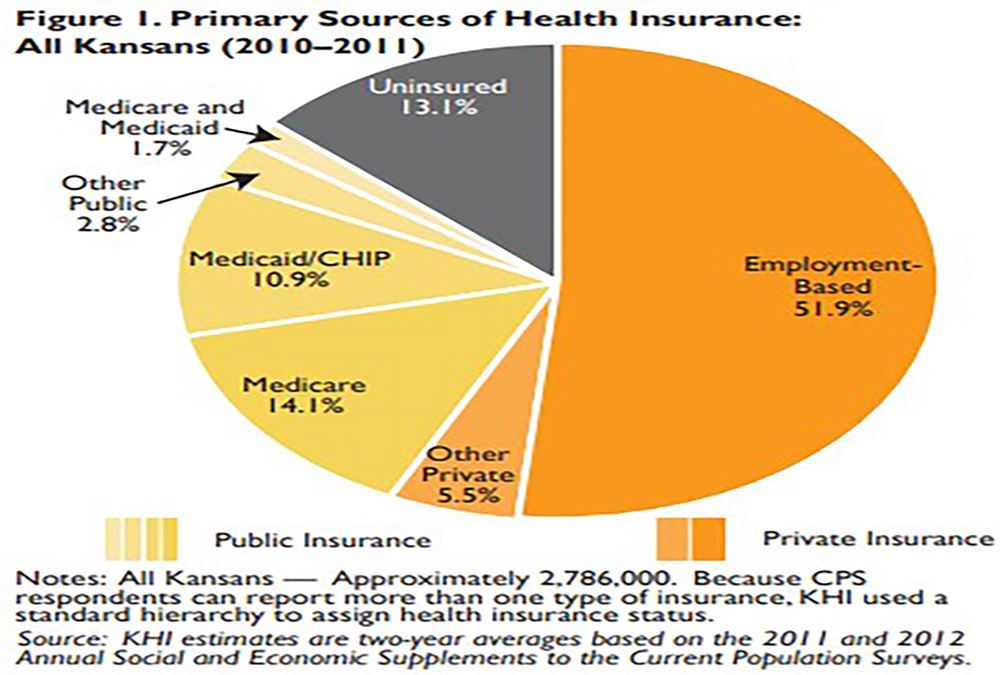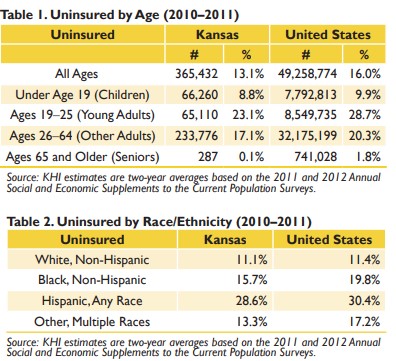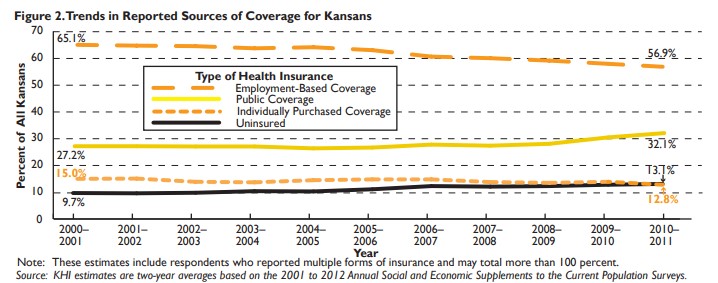Current Coverage
-
- In 2010–2011, 13.1 percent of Kansans were uninsured. This is not significantly different from the 12.8 percent who were uninsured in 2009–2010.
- The percentage of Kansans without health insurance in 2010–2011 — 13.1 percent — is significantly lower than the national rate of 16.0 percent.
- The percentage of uninsured adult Kansans (age 26–64) increased significantly from 14.4 percent in 2008–2009 to 17.1 percent in 2010–2011. At the same time, employment-based insurance for adult Kansans age 26–64 decreased significantly from 71.0 percent in 2008–2009 to 67.3 percent in 2010–2011.


